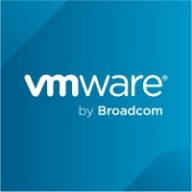

IBM SevOne Network Performance Management and VMware vCenter are compared in network and virtualization management. VMware vCenter holds an advantage with its advanced virtualization features, while IBM SevOne NPM is preferred for its support and ease of deployment.
Features: IBM SevOne NPM provides detailed monitoring, real-time network performance insights, and user-friendly usability. VMware vCenter offers robust virtualization management, integration capabilities, and comprehensive features for enterprise environments.
Room for Improvement: IBM SevOne NPM could enhance its configuration process, analytics capabilities, and user interface. VMware vCenter could improve scalability, performance in large environments, and simplify its complexity for new users.
Ease of Deployment and Customer Service: IBM SevOne NPM is known for its straightforward deployment and responsive customer support. VMware vCenter provides extensive documentation and robust support, though its deployment is more complex compared to IBM SevOne NPM.
Pricing and ROI: IBM SevOne NPM offers a favorable setup cost and good ROI, making it cost-effective for network management. VMware vCenter, though more expensive, justifies its cost with advanced features and long-term value, providing a significant return on investment.
The technical support from IBM for SevOne Network Performance Management (NPM) is very good.
VMware vCenter manages high availability effectively.
The technical support is good.
It is suitable for small, medium, and enterprise-level companies.
On a scale of one to ten, I would rate its scalability as ten.
The scalability is good in vCenter.
The solution is completely scalable as we can increase any host with great simplicity.
The stability of IBM SevOne Network Performance Management (NPM) is excellent.
We have not faced any issues after upgrading VMware vCenter, whether on the vCenter or any host.
It would be beneficial to have out-of-the-box integration with third-party vendors and improvements in correlation features.
The licensing model has shifted, leading to higher costs, particularly for smaller organizations.
The license cost has increased significantly, which is the primary negative aspect of VMware vCenter.
Better redundancy options can be achieved by using multiple vCenter machines.
The licensing model now requires purchasing 96-core solutions, even if fewer cores are needed, adding to the cost burden.
The most valuable features of IBM SevOne Network Performance Management (NPM) are its stability, usability, visibility, and user-friendly interface.
High availability is employed so if an ESXi server is down, the VM is supported on another ESXi on other servers.
The high availability feature is particularly valuable when a host goes down or experiences high usage, as it automatically migrates VMs to other hosts to balance performance.
VMware vCenter is excellent for managing and monitoring hypervisors, specifically with features like live migration, storage vMotion, and host vMotion.
| Product | Market Share (%) |
|---|---|
| VMware vCenter | 1.0% |
| IBM SevOne Network Performance Management (NPM) | 1.4% |
| Other | 97.6% |


| Company Size | Count |
|---|---|
| Small Business | 4 |
| Midsize Enterprise | 6 |
| Large Enterprise | 45 |
| Company Size | Count |
|---|---|
| Small Business | 15 |
| Midsize Enterprise | 5 |
| Large Enterprise | 18 |
The IBM® SevOne Network Performance Management (IBM SevOne NPM) solution helps you spot, address, and prevent network performance issues early with machine learning-powered analytics from a single source. Boost network performance and improve your user application experience by proactively monitoring your multivendor end-to-end network across enterprise, communication, and managed service provider networks.
Transform raw network performance data into intelligent and actionable insights. The IBM SevOne NPM solution goes beyond detection, combining industry-leading expertise and advanced technology to help your IT team plan and optimize your network and act on what matters: improving network performance to provide an exceptional customer experience.
For further information, please visit www.ibm.com/cloud/sevo...
VMware vCenter provides centralized management for virtual machines, offering enhanced resource control, high availability, and data protection. Its integration with NSX and vSAN simplifies infrastructure management, although improvements in pricing, licensing, and technical support are needed.
VMware vCenter streamlines the management of virtual infrastructures, facilitating scalability and elasticity through features like DRS, vMotion, and snapshot capabilities. While users appreciate its centralized control and extensive integration options, complexities in interface and upgrades are seen as challenges. Issues like fragmented licensing, difficult Fault Tolerance management, and high resource demands have been highlighted, alongside the need for enhanced security, monitoring, and seamless cloud integration. vCenter is widely used in data centers for overseeing large virtual environments, integrating cloud services, and providing infrastructure as a service.
What are the main features of VMware vCenter?
What benefits and ROI should users expect?
Industries such as IT, finance, healthcare, and government deploy VMware vCenter to manage their extensive virtual environments. Users rely on its automation and centralized management capabilities to ensure high performance and uptime in data center operations, often leveraging it to integrate with cloud services.
We monitor all Server Monitoring reviews to prevent fraudulent reviews and keep review quality high. We do not post reviews by company employees or direct competitors. We validate each review for authenticity via cross-reference with LinkedIn, and personal follow-up with the reviewer when necessary.